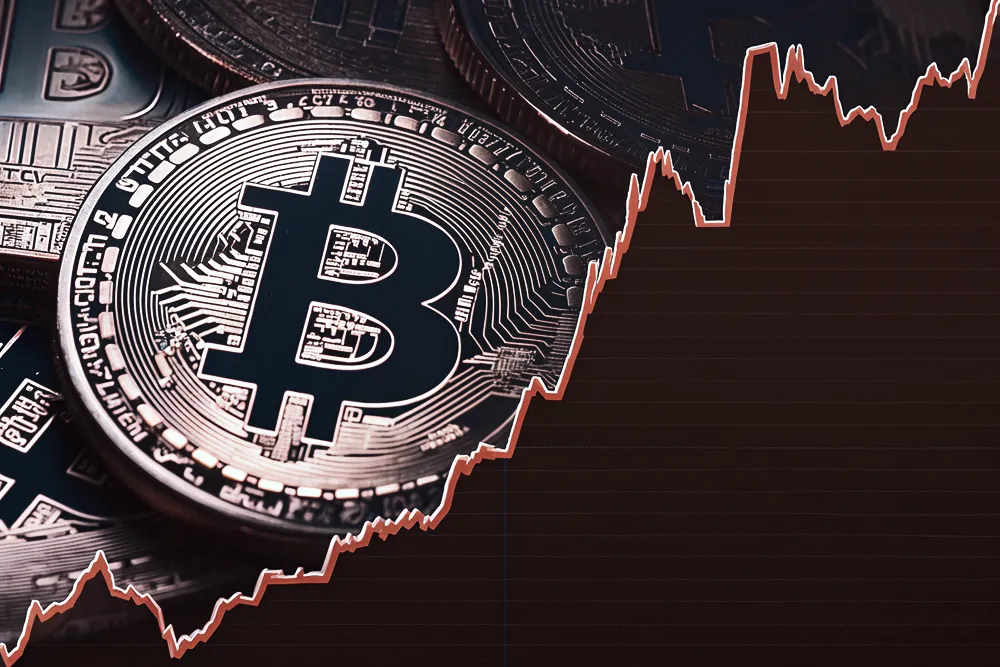Original Title: Cathie Wood Part II: Why Bitcoin Will Always Be #1 Cryptocurrency
Original Source: The Master Investor Podcast with Wilfred Frost
Organized and Compiled by: Deep Tide TechFlow
Guest: Cathie Wood, Founder and CEO of Ark Investment
Host: Wilfred Frost
Broadcast Date: September 27, 2025
Key Summary
Cathie Wood is the founder and CEO of Ark Invest, and she shared her strong belief that Bitcoin will become the leading cryptocurrency, detailing the important role of stablecoins in the crypto ecosystem. She also mentioned her friendly disagreement with Tom Lee from Fundstrat. While she believes Ethereum will not surpass Bitcoin, her attitude towards Ethereum has changed, and she recently invested in BitMine.
Additionally, Cathie explored the potential impact of gold's recent strong performance on the cryptocurrency market and the overall financial market. She provided valuable insights for investors on how to navigate challenges in this rapidly changing field, helping them better grasp market trends and investment opportunities.
Highlights
Ark's main investment focus is on Bitcoin, Ethereum, and Solana.
There are not many truly promising cryptocurrencies. In the pure cryptocurrency space, Bitcoin dominates. Besides that, there are stablecoins, which are also cryptocurrencies.
Bitcoin has three key roles. First, it is the foundation of the global monetary system; second, as L1, it has never been hacked; third, it is the pioneer in the field of crypto assets.
In addition, we are also looking at some emerging projects, such as Hyperliquid. This project is reminiscent of Solana's early development stage, and it has begun to prove its value and gradually compete with major players in the industry.
We are also monitoring other services, such as money market funds, and projects related to the Solana ecosystem, like Jito.
We do not invest in gold, but that does not mean it is a bad investment.
The Value of Stablecoins
Wilfred Frost: I hear you are a strong supporter of cryptocurrencies. Do you believe in all cryptocurrencies, or are you only confident in certain specific ones?
Cathie Wood: We do not believe that all cryptocurrencies have growth potential. In fact, we think there are not many truly promising cryptocurrencies. In the pure cryptocurrency space, Bitcoin dominates. Besides that, there are stablecoins, which are also cryptocurrencies, but they are primarily pegged to the US dollar, as they are usually backed by government bonds. Therefore, we believe Bitcoin is the only true cryptocurrency in the real sense, and it will become the largest one in the market. Bitcoin is a rules-based monetary system that follows the quantity theory of money. The total supply of Bitcoin is capped at 21 million, with about 20 million currently in circulation. This is what is known as the quantity theory. Stablecoins, on the other hand, are dollar-based digital assets. If you can find ways to use stablecoins, such as in DeFi, you can also earn yields. Just last week, Coinbase launched a product that allows users to lend USDC to others in the DeFi ecosystem. Although these loans cannot earn traditional interest payments due to regulatory reasons, users can still earn up to 10.4% returns.
Wilfred Frost: I want to learn more about stablecoins. I can understand why dollar-denominated and easily transferable assets would be attractive. For example, in some countries, stablecoins might be used to avoid the risk of asset confiscation. But for someone living in London or New York, what is the reason to use stablecoins? After all, dollars or pounds can already be easily transferred, earn interest, and have the backing of central banks and governments. What advantages are there to trading through stablecoins in these countries?
Cathie Wood: You are right; currently, there are mainly two stablecoins in the market: Tether and Circle. Tether is primarily circulated outside the US and Europe, while Circle has stronger regulatory compliance in the US. Additionally, Circle has launched a euro-based USDC stablecoin, but it has not yet been widely adopted. In Europe, with the implementation of Mica (the regulatory framework for crypto assets), Tether and Circle have captured 90% of the stablecoin market.
So, why do people in developed countries also need stablecoins? We understand the demand in emerging markets, where people can protect their wealth through stablecoins in economically unstable countries. We initially thought Bitcoin would take on this role, but the emergence of stablecoins has indeed taken a portion of Bitcoin's market, which we did not anticipate in our initial analysis.
In the world of blockchain technology, we are gradually eliminating the intermediary roles in financial services. These intermediaries, which I jokingly refer to as "toll booths," exist to reduce transaction risks and protect the security of transactions between financial institutions. However, in the peer-to-peer transaction model of blockchain, these intermediaries will be completely replaced. Simply put, traditional credit card transactions usually incur a 2.5% fee, which is a cost brought by intermediaries. Blockchain-based transaction fees can be significantly reduced. In developed countries, these fees could drop from 2% to 4% to below 1%, while in emerging markets, such as Nigeria, remittance fees can be as high as 25%, and these costs are also expected to decrease significantly. Ultimately, blockchain technology will compress global transaction costs to very low levels.
Wilfred Frost: Where are these fees currently? Because the mining and transaction costs of cryptocurrencies are still far from dropping to 1%.**
Cathie Wood: These changes take time to realize. For example, I just mentioned the USDC case, where someone said, "I can lend money at a 10.4% interest rate, right? Such rates cannot be found elsewhere." This is a high-yield savings method for depositors. Those borrowing at a 10.4% interest rate are often too small to obtain loans from banks. DeFi is changing this situation, giving those who previously found it difficult to obtain loans a chance, while also providing depositors with higher yields.
The on-chain ecosystem is very transparent, and many loans are over-collateralized. We learned this from the collapses of cryptocurrencies like 3AC and Luna. On the blockchain, anyone's collateral that falls below value will be automatically liquidated, meaning financial institutions can quickly recover funds. In contrast, in opaque and highly centralized systems like FTX, funds can be completely lost. Therefore, from a safety perspective, the transparent mechanisms on-chain are actually more reliable than FTX, which is clearly a fraudulent company.
The Key Role of Bitcoin
Wilfred Frost: A few weeks ago, we interviewed Tom Lee, who is a supporter of Bitcoin but is more optimistic about Ethereum's future. He believes Ethereum's scale will surpass Bitcoin. Why do you think he is wrong? Why will Bitcoin always be more important than Ethereum?**
Cathie Wood: Bitcoin has three key roles. First, it is the foundation of the global monetary system, adhering to strict quantity rules. This is a very important concept in itself. Second, as a first-layer blockchain technology, it has never been hacked, while other blockchains have not achieved this. This is also why the monetary system chooses to be based on Bitcoin. Third, it is the pioneer in the field of crypto assets; we wrote the first white paper on Bitcoin back in 2016. These attributes give Bitcoin a unique advantage.
However, Ethereum also plays an important role in the decentralized finance (DeFi) space. Ether is the native currency in the DeFi ecosystem, and many transaction fees flow to second-layer scaling solutions, such as Robinhood, which recently announced the launch of its own second-layer network, similar to Coinbase's Base. These second-layer networks have garnered disproportionate fees. The question now is whether, as second-layer networks increase, they will compete with each other, thereby enhancing the importance of the first layer. This is a trend worth watching and one of the reasons we invest in Ethereum. Nevertheless, I think these competitive relationships might be something Tom and I can discuss in depth.
Focusing on Bitcoin, Ethereum, and Solana
Wilfred Frost: For other cryptocurrencies, do you think there are many worth investing in, or are there actually only a few?**
Cathie Wood: Currently, only a few cryptocurrencies are worth paying attention to. In our public funds, we primarily invest in Bitcoin and Ethereum. These transactions are public, so I can tell you that we have found a way to invest in Ethereum that complies with regulations. Additionally, we have chosen Bitcoin mining companies as an important investment direction.
Besides Bitcoin and Ethereum, Solana is the third project we are focusing on. The investment in Solana is realized through Brara Sports. Some people think I or Ark have acquired some sports teams, but that is not the case. Brara Sports is a company that collaborates with Solana Treasury and has the support of the UAE, which makes Solana's role even more significant.
These three cryptocurrencies are our main investment focus. Besides that, we are also looking at some emerging projects, such as Hyperliquid. This project is reminiscent of Solana's early development stage, and it has begun to prove its value and gradually compete with major players in the industry.
We are also monitoring other services, such as money market funds, and projects related to the Solana ecosystem, like Jito. While these derivative projects are important, if you ask us about our main investment direction, it remains Bitcoin, Ethereum, and Solana.
Why is Gold Rising?
Wilfred Frost: Gold's performance this year has clearly been outstanding. Do you think the reasons for investing in gold are stronger now than ever? What is your stance compared to Bitcoin?**
Cathie Wood: We do not invest in gold, but that does not mean it is a bad investment. It’s just that gold does not fit into the area of technological innovation we focus on. We are more interested in technology-driven disruptive innovations. However, from an economic perspective, I always take gold's market performance seriously. Typically, a rise in gold often signals the onset of inflation, but this time it seems different.
We have been monitoring an indicator called the Metal to Gold Index, which measures the ratio of metal prices to gold prices. Currently, this ratio has dropped below 0.8 to 0.9. This concerns me, as there may be deeper reasons behind it. This could be related to China's economic situation. They are still experiencing deflationary adjustments due to real estate speculation. Additionally, I believe this rise in gold is more influenced by geopolitical risks.
For example, the chaos surrounding the H-1B visa policy that occurred last Friday night. This has made many people uneasy, especially foreign students from India and China and their parents, who may be worried, "What will happen next?" Personally, I think this is just a negotiation issue between the US and India that will ultimately be resolved. After all, the US does not want to lose talented individuals from around the world, even though the current rhetoric may be concerning. But in this situation, the media is heavily reporting these events, and people start to think, "How should I respond?" Some wealthier investors, especially the older generation, may choose to shift their funds into gold rather than digital assets.
免责声明:本文章仅代表作者个人观点,不代表本平台的立场和观点。本文章仅供信息分享,不构成对任何人的任何投资建议。用户与作者之间的任何争议,与本平台无关。如网页中刊载的文章或图片涉及侵权,请提供相关的权利证明和身份证明发送邮件到support@aicoin.com,本平台相关工作人员将会进行核查。




